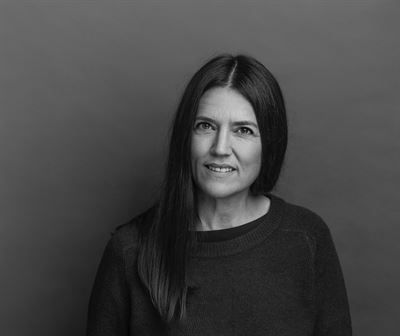Marknadsnyheter
Lynparza improved the time women lived without disease progression to 22 months in the broad population and to 37 months in HRD-positive patients
Lynparza improved the time women lived without disease progression to 22 months in the broad population and to 37 months in HRD-positive patients as 1st-line maintenance treatment with bevacizumab for newly-diagnosed advanced ovarian cancer
AstraZeneca and MSD’s Lynparza added to bevacizumab reduced the risk of disease progression or death by 41% in the overall trial population
AstraZeneca and MSD Inc., Kenilworth, N.J., US (MSD: known as Merck & Co., Inc. inside the US and Canada) today announced detailed positive results from the Phase III PAOLA-1 trial, showing Lynparza (olaparib) demonstrated a statistically significant and clinically meaningful improvement in progression-free survival (PFS) in women with newly-diagnosed advanced ovarian cancer.
The trial compared Lynparza when added to standard-of-care (SoC) bevacizumab vs. bevacizumab alone in women in the 1st-line maintenance setting, irrespective of their genetic biomarker status or outcome from previous surgery. Investigator-assessed results showed Lynparza added to bevacizumab reduced the risk of disease progression or death by 41% (equal to a hazard ratio of 0.59) and improved PFS to a median of 22.1 months vs. 16.6 months for those treated with bevacizumab alone. At two years since trial initiation, 46% of women treated with Lynparza added to bevacizumab showed no disease progression vs. 28% of women receiving bevacizumab alone.
The sensitivity analysis of blinded independent central review (BICR) of PFS was consistent, showing a similar improvement with a median of 26.1 months for Lynparza added to bevacizumab vs. 18.3 months for bevacizumab alone. The safety and tolerability profile of Lynparza and bevacizumab were consistent with those known from previous trials for each medicine, and with no detriment to quality of life.
The results were presented during the Presidential Symposium of the 2019 European Society of Medical Oncology (ESMO) congress in Barcelona, Spain (Abstract #LBA2_PR).
The trial also included exploratory sub-group analyses including BRCA-mutated (BRCAm) and broader homologous recombination deficiency (HRD) populations, which showed treatment with Lynparza added to bevacizumab demonstrated greater benefit vs. bevacizumab alone. In the BRCAm-positive sub-group, Lynparza added to bevacizumab reduced the risk of disease progression or death by 69% (equal to a hazard ratio of 0.31). In the broader HRD-positive sub-group, which represents approximately half of women with newly-diagnosed advanced ovarian cancer and includes BRCAm, Lynparza added to bevacizumab reduced the risk of disease progression or death by 67% (equal to a hazard ratio of 0.33).
José Baselga, Executive Vice President, Oncology R&D, said: “This trial was designed to reflect everyday clinical practice using a global standard-of-care treatment with Lynparza. The results showed at two years nearly half of women with advanced ovarian cancer were progression-free with Lynparza added to bevacizumab as a 1st-line maintenance treatment, regardless of their biomarker status or surgical outcome. We are working with regulatory authorities to bring Lynparza to these patients as quickly as possible.”
Roy Baynes, Senior Vice President and Head of Global Clinical Development, Chief Medical Officer, MSD Research Laboratories, said: “PAOLA-1 is the second positive Phase III trial involving Lynparza in the 1st-line maintenance setting for advanced ovarian cancer. Following the positive SOLO-1 trial, we are encouraged by the PAOLA-1 results which reaffirm AstraZeneca and MSD’s ongoing commitment to explore potential treatment options for more women with ovarian cancer.”
Isabelle Ray-Coquard, principal investigator of the PAOLA-1 trial and medical oncologist, Centre Léon Bérard and President of the GINECO group, said: “The goal of 1st-line, including maintenance, treatment for women with newly-diagnosed advanced ovarian cancer is to delay relapse. Unfortunately, the risk of relapsing is high, as two out of three women relapse within three years of initial diagnosis. In PAOLA-1, the results of Lynparza added to bevacizumab were significant and have the potential to change clinical practice in how women with advanced ovarian cancer are treated in the 1st-line maintenance setting.”
Summary of PFS in overall population
| Median in months | Hazard Ratio (95% CI) | ||
| Lynparza + bevacizumab | bevacizumab alone | ||
| PFS (investigator assessed) (n=806) | 22.1 | 16.6 | 0.59 (0.49-0.72) p<0.0001 |
| PFS (BICR) | 26.1 | 18.3 | 0.63 (0.51-0.77) p<0.0001 |
Summary of PFS in overall population
| Median in months | Hazard Ratio (95% CI) | ||
| Lynparza + bevacizumab | bevacizumab alone | ||
| PFS (investigator assessed) (n=806) | 22.1 | 16.6 | 0.59 (0.49-0.72) p<0.0001 |
| PFS (BICR) | 26.1 | 18.3 | 0.63 (0.51-0.77) p<0.0001 |
Summary of PFS in exploratory subgroup analyses
| Median in months | Hazard Ratio (95% CI) | ||
| Lynparza + bevacizumab | bevacizumab alone | ||
| PFS by BRCAm status | |||
| BRCAm (n=237) | 37.2 i | 21.7 | 0.31 (0.20-0.47) |
| Non-BRCAm (n=569) | 18.9 | 16.0 | 0.71 (0.58-0.88) |
| PFS by HRD status | |||
| HRD-positive (n=387) | 37.2 i | 17.7 | 0.33 (0.25-0.45) |
| HRD-positive, non-BRCAm (n=152) | 28.1 i | 16.6 | 0.43 (0.28-0.66) |
| HRD-negative/unknown (n=419) | 16.9 | 16.0 |
|
i The median PFS estimate is immature at this time (below 50% maturity) and will evolve with additional follow up
Overall Grade 3 or above adverse events (AEs) were 57% for Lynparza added to bevacizumab and 51% for bevacizumab alone. The most common AEs ≥20% were nausea (53%), fatigue (53%), hypertension (46%), anaemia (41%), lymphopenia (24%), vomiting (22%) and arthralgia (22%). Grade 3 or above AEs were hypertension (19%), anaemia (17%), lymphopenia (7%), neutropenia (6%), fatigue (5%), nausea (2%), diarrhoea (2%), leukopenia (2%) vomiting (1%) and abdominal pain (1%). AEs led to dose interruption in 54% of patients on Lynparza while 20% of patients discontinued treatment.
Lynparza, which is being jointly developed and commercialised by AstraZeneca and MSD, is approved for the treatment of advanced ovarian cancer and metastatic breast cancer and has been used to treat over 25,000 patients worldwide. It is the only PARP inhibitor with positive Phase III trials in four different cancer types (ovarian, breast, pancreatic and prostate).
About PAOLA-1
PAOLA-1 is a double-blind Phase III trial testing the efficacy and safety of Lynparza added to SoC bevacizumab vs. bevacizumab alone, as a 1st-line maintenance treatment for newly-diagnosed advanced FIGO Stage III-IV high grade serous or endometroid ovarian, fallopian tube, or peritoneal cancer patients who had a complete or partial response to 1st-line treatment with platinum-based chemotherapy and bevacizumab.
PAOLA-1 is an ENGOT (European Network of Gynaecological Oncological Trial groups) trial, sponsored by ARCAGY Research (Association de Recherche sur les CAncers dont GYnécologiques) on behalf of GINECO (Groupe d’Investigateurs National des Etudes des Cancers Ovariens et du sein). ARCAGY-GINECO is an academic group specialising in clinical and translational research in patients’ cancers and a member of the GCIG (Gynecologic Cancer InterGroup).
About ovarian cancer
Ovarian cancer is the eighth most common cause of death from cancer in women worldwide. In 2018, there were nearly 300,000 new cases diagnosed and around 185,000 deaths.1 Most women are diagnosed with advanced (Stage III or IV) ovarian cancer and have a five-year survival rate of approximately 30%.2 For newly-diagnosed advanced ovarian cancer, the primary aim of treatment is to delay progression of the disease for as long as possible and maintain the patient’s quality of life with the intent of achieving complete remission or cure.3,4,5,6
About homologous recombination deficiency
Homologous recombination deficiencies (HRDs) encompass a wide range of genetic abnormalities, including BRCA mutations, that can be detected using tests. As the BRCA gene drives DNA repair via homologous recombination, mutation of this gene leads to HR deficiency thereby interfering with normal cell DNA repair mechanisms. BRCA mutations are just one of many HRDs which are found in up to half of all newly diagnosed advanced ovarian cancer patients and confer sensitivity to PARP inhibitors including Lynparza.
About Lynparza
Lynparza is a first-in-class PARP inhibitor and the first targeted treatment to block DNA damage response (DDR) in cells/tumours harbouring a deficiency in homologous recombination repair, such as mutations in BRCA1 and/or BRCA2. Inhibition of PARP with Lynparza leads to the trapping of PARP bound to DNA single-strand breaks, stalling of replication forks, their collapse and the generation of DNA double-strand breaks and cancer cell death. Lynparza is being tested in a range of PARP-dependent tumour types with defects and dependencies in the DDR pathway.
Lynparza is currently approved in 64 countries, including those in the EU, for the maintenance treatment of platinum-sensitive relapsed ovarian cancer, regardless of BRCA status. It is approved in the US, the EU, Japan and several other countries as 1st-line maintenance treatment of BRCA-mutated advanced ovarian cancer following response to platinum-based chemotherapy. It is also approved in 43 countries, including the US and Japan, for germline BRCA-mutated, HER2-negative, metastatic breast cancer, previously treated with chemotherapy; in the EU, this includes locally-advanced breast cancer. Regulatory reviews are underway in other jurisdictions for ovarian, breast and pancreatic cancers.
Lynparza, which is being jointly developed and commercialised by AstraZeneca and MSD, is approved for the treatment of advanced ovarian cancer and metastatic breast cancer and has been used to treat over 25,000 patients worldwide. Lynparza has the broadest and most advanced clinical-trial development programme of any PARP inhibitor, and AstraZeneca and MSD are working together to understand how it may affect multiple PARP-dependent tumours as a monotherapy and in combination across multiple cancer types. Lynparza is the foundation of AstraZeneca’s industry-leading portfolio of potential new medicines targeting DDR mechanisms in cancer cells.
About GINECO
GINECO (Groupe d’Investigateurs National des Etudes des Cancers Ovariens et du sein) is the French Cooperative Group in Oncology labelled by INCA (Institut National du Cancer, or French NCI) developing and conducting gynaecological and metastatic breast cancer clinical trials at the national and international level. Founded in 1993, the GINECO group is a member of international consortia such as ENGOT and GCIG.
About ENGOT
ENGOT (European Network for Gynaecological Oncological Trial groups) is a research network of the European Society of Gynaecological Oncology (ESGO). Founded in 2007, ENGOT includes 21 cooperative groups from 25 European countries.
About GCIG
The GCIG (Gynecological Cancer InterGroup) aims to promote and facilitate high quality clinical trials in order to improve outcomes for women with gynaecological cancer. Founded in 1998, GCIG includes 23 cooperative groups from 28 countries worldwide.
About the AstraZeneca and MSD strategic oncology collaboration
In July 2017, AstraZeneca and Merck & Co., Inc., Kenilworth, NJ, US, known as MSD outside the US and Canada, announced a global strategic oncology collaboration to co-develop and co-commercialise Lynparza, the world’s first PARP inhibitor, and potential new medicine selumetinib, a MEK inhibitor, for multiple cancer types. Working together, the companies will develop Lynparza and selumetinib in combination with other potential new medicines and as monotherapies. Independently, the companies will develop Lynparza and selumetinib in combination with their respective PD-L1 and PD-1 medicines.
About AstraZeneca in Oncology
AstraZeneca has a deep-rooted heritage in oncology and offers a quickly-growing portfolio of new medicines that has the potential to transform patients’ lives and the Company’s future. With at least six new medicines to be launched between 2014 and 2020, and a broad pipeline of small molecules and biologics in development, the Company is committed to advance oncology as a key growth driver for AstraZeneca focused on lung, ovarian, breast and blood cancers. In addition to AstraZeneca’s main capabilities, the Company is actively pursuing innovative partnerships and investment that accelerate the delivery of our strategy, as illustrated by the investment in Acerta Pharma in haematology.
By harnessing the power of four scientific platforms – Immuno-Oncology, Tumour Drivers and Resistance, DNA Damage Response and Antibody Drug Conjugates – and by championing the development of personalised combinations, AstraZeneca has the vision to redefine cancer treatment and, one day, eliminate cancer as a cause of death.
About AstraZeneca
AstraZeneca is a global, science-led biopharmaceutical company that focuses on the discovery, development and commercialisation of prescription medicines, primarily for the treatment of diseases in three therapy areas – Oncology, Cardiovascular, Renal and Metabolism (CVRM), and Respiratory. AstraZeneca operates in over 100 countries and its innovative medicines are used by millions of patients worldwide. Please visit astrazeneca.com and follow us on Twitter @AstraZeneca.
| Media Relations | ||
| Gonzalo Viña | +44 203 749 5916 | |
| Rob Skelding | Oncology | +44 203 749 5821 |
| Rebecca Einhorn | Oncology | +1 301 518 4122 |
| Matt Kent | BioPharmaceuticals | +44 203 749 5906 |
| Jennifer Hursit | Other | +44 203 749 5762 |
| Christina Malmberg Hägerstrand | Sweden | +46 8 552 53 106 |
| Michele Meixell | US | +1 302 885 2677 |
| Investor Relations | ||
| Thomas Kudsk Larsen | +44 203 749 5712 | |
| Henry Wheeler | Oncology | +44 203 749 5797 |
| Christer Gruvris | BioPharmaceuticals (CV, metabolism) | +44 203 749 5711 |
| Nick Stone | BioPharmaceuticals (respiratory, renal) | +44 203 749 5716 |
| Josie Afolabi | Other medicines | +44 203 749 5631 |
| Craig Marks | Finance, fixed income | +44 7881 615 764 |
| Jennifer Kretzmann | Corporate access, retail investors | +44 203 749 5824 |
| US toll-free | +1 866 381 72 77 |
References
1. The World Health Organization. IARC. Globocan 2018. Available at: https://gco.iarc.fr/. [Accessed August 2019].
2. National Cancer Institute. (2019). Cancer Stat Facts: Ovarian Cancer Available at: https://seer.cancer.gov/statfacts/html/ovary.html [Accessed August 2019].
3. Moore K et al. Maintenance Olaparib in Patients with Newly Diagnosed Advanced Ovarian Cancer. Presented at ESMO October 2018.
4. Raja, F. A., Chopra, N. & Ledermann, J. A. 2012. Optimal first-line treatment in ovarian cancer. Ann. Oncol. Off. J. Eur. Soc. Med. Oncol. 23 Suppl 10, x118-127.
5. NHS Choices, Ovarian Cancer Available at: https://www.nhs.uk/conditions/ovarian-cancer/treatment/ [Accessed August 2019].
6. Ledermann.et al. 2013. Newly diagnosed and relapsed epithelial ovarian carcinoma: ESMO Clinical Practice for diagnosis, treatment and follow-up. Annals of Oncology, 24(suppl 6), pp.vi24-vi32.
Marknadsnyheter
Regeringen föreslår lättnader i byggkraven för studentbostäder
Regeringen har beslutat om en lagrådsremiss med förslag till lättnader i byggkraven för studentbostäder. Syftet är att öka möjligheterna till flexibilitet vid byggandet.
– På många studieorter är det svårt för studenter att hitta boende. Därför behöver byggregelverket förenklas. Syftet är att möjliggöra för fler studentbostäder genom sänkta byggkostnader och ökad flexibilitet, säger infrastruktur- och bostadsminister Andreas Carlson.
Förslaget innebär att det blir möjligt att göra undantag från kraven på tillgänglighet och användbarhet i en byggnad som innehåller studentbostäder. Undantagen ska kunna tillämpas vid både nyproduktion och vid ändring av en byggnad.
Det ska vara möjligt att göra undantag för högst 80 procent av studentbostäderna i ett byggprojekt. Minst 20 procent av studentbostäderna ska fortfarande uppfylla gällande krav på tillgänglighet och användbarhet för personer med nedsatt rörelse- eller orienteringsförmåga.
Lagändringen ger större flexibilitet vid byggande av studentbostäder och skapar fler tänkbara sätt att utforma planlösningar. Till exempel kan bostadsytan minskas och fler bostäder rymmas inom en given yta.
De föreslagna undantagen ska inte hindra personer med funktionsnedsättning att vara delaktiga i sociala sammanhang. En studentbostad som omfattas av undantagen ska kunna besökas av en person med nedsatt rörelse- eller orienteringsförmåga.
Regeringen breddar också definitionen av studentbostäder till att inkludera all vuxenutbildning för att göra det möjligt för fler kommuner att erbjuda studentbostäder.
Förslagen föreslås träda i kraft den 1 juli 2025.
Lagrådsremissen: Lättnader i byggkraven för studentbostäder – Regeringen.se
Presskontakt
Ebba Gustavsson
Pressekreterare hos infrastruktur- och bostadsminister Andreas Carlson
Telefon (växel) 08-405 10 00
Mobil 076-12 70 488
ebba.gustavsson@regeringskansliet.se
Marknadsnyheter
“Vi behöver tillsammans enas om vettiga avtal, som sätter standard för branschen”


Sveriges Radios Kulturnytt gör just nu en mycket välkommen granskning av villkoren i musikbranschen. Igår lyftes artisten Siw Malmkvists situation med ett avtal som inte förnyats på över 60 år. Hennes situation är tyvärr långt ifrån unik. Musikerförbundet har länge uppmärksammat att majorbolagen fortsätter att betala extremt låga royaltynivåer till artister vars kontrakt skrevs på 1960-talet – en tid då digital streaming inte existerade.
– Jag kan intyga att artisterna som talar ut i P1 är långt ifrån ensamma om sin situation och vi uppmanar deras artistkollegor att gå ut med sitt tydliga stöd till de som vågar bryta tystnaden om oskäliga ersättningar, säger Musikerförbundets ordförande Karin Inde.
Musiker och artister skapar det värde som skivbolagen tjänar pengar på, men ändå ser vi gång på gång hur bolagen behåller stora delar av intäkterna. Att en av Sveriges mest folkkära artister, med en karriär som sträcker sig över decennier, fortfarande har en oskälig royalty är ett tydligt bevis på branschens obalans.
– Tystnadskulturen kring prissättning är enbart bra för bolagen. Både artister och musiker skulle verkligen tjäna på att dela med sig till varandra om hur betalningar och dealar verkligen ser ut. Förstås i trygga, egna rum. Det är bara bolagen som tjänar på att vi inte pratar med varandra om pengar, säger Karin Inde.
Stort tack till de modiga artister som ser till att lyfta problematiken! För att vi ska få till en i grunden mer rättvis musikbransch behöver de stora parterna i sammanhanget – skivbolagen, musikerna och artisterna – göra som de flesta andra svenska branscher lyckas med:
– Vi behöver tillsammans enas om vettiga och balanserade avtal, som sätter standard för branschen. Musikerförbundet är redo att göra vår del i arbetet för bättre villkor i musikbranschen, frågan är om skivbolagen är redo, säger Karin Inde.
Karin Inde
Förbundsordförande
karin.inde@musikerforbundet.se
+46 (0)704447228
Musikerförbundet är fackförbundet för professionella musiker och artister. Vi arbetar för förbättrade upphovsrättsliga och arbetsrättsliga villkor och för att våra medlemmar ska få en rättvis del av de värden de skapar i samhället.
Marknadsnyheter
Bönor från egen kaffeskog, sump till jord – Viking Lines nya kaffe gör gott på många olika sätt


Viking Lines resenärer dricker varje år 8,5 miljoner koppar kaffe. Nu satsar rederiet på ett helt nytt kaffe som ger minskade klimatutsläpp och bättre levnadsvillkor för odlarna. Kaffet från Slow Forest odlas på rederiets egen odling i Laos utan kemiska gödningsmedel, handplockas och rostas därefter i Danmark.
Allt kaffe som serveras på Viking Lines fartyg är nu hållbart producerat Slow Forest-kaffe, odlat på rederiets 75 hektar stora odling på högplatåerna i Laos och rostat i Danmark. Kaffeplantorna odlas bland träd på återbeskogad mark, i stället för på traditionellt skövlade plantager. Viking Lines odling ligger i en kolsänka där målsättningen är att plantera 30 000 träd, vilket innebär nästan 400 träd per hektar. Kaffeskogen förbättrar också den lokala biologiska mångfalden i området.
Odlingen, bearbetningen och rostningen av kaffet hanteras av Slow Forest Coffee. För företaget är det viktigt att produktionskedjan är rättvis och transparent. Utöver miljöfördelarna erbjuder Slow Forest bättre lönevillkor och sjukersättning för byns odlare.
”Den traditionella kaffetillverkningens koldioxidavtryck är stort och merparten av intäkterna går till Europa i stället för produktionsländerna. Vi ville göra annorlunda. Våra kunder vill göra hållbara val, och nu kan de njuta av sitt kaffe med bättre samvete än någonsin tidigare,” berättar Viking Lines restaurangchef Janne Lindholm.
Bönorna till Slow Forest-kaffet får sakta mogna i skuggan av träden, utan kemiska gödningsmedel. De plockas också för hand, vilket avsevärt förbättrar kaffets kvalitet och smak. Viking Lines nya kaffe består till 100 procent av Arabica-bönor, med en balanserad syrlighet samt smak av nötter och choklad. Rostningsprofilen har skapats av den världsberömda danska rostningsmästaren Michael de Renouard.
”Vi valde en mörkrost till fartygets kaffe, vilket passar både finländarnas och svenskarnas nuvarande smakpreferenser gällande rostning. Finländarnas smak gällande kaffe har under de senaste åren utvecklats mot en mörkare rostning. Innan vi gjorde vårt slutgiltiga val testades det nya kaffet i Viking Cinderellas bufférestaurang och personalmässen – och båda testgrupperna gav toppbetyg. Då 8,5 miljoner koppar kaffe bryggs varje år kan inget lämnas åt slumpen!” säger Janne Lindholm.
Viking Lines hållbarhetsmål stannar inte vid produktionskedjan. Kaffesump från fartygen återvinns nämligen som råmaterial för trädgårdsjord. Detta minskar avsevärt användningen av jungfrulig torv vid tillverkningen av mylla.
”Vi har som mål att allt som tagits ombord på fartygen som är möjligt att återvinna ska återanvändas eller återvinnas. Det gäller inte bara kaffet utan även matavfall och till exempel textilier som tas ur bruk. Ett bra exempel på vårt livscykeltänkande är att frityrolja från fartygets restauranger blir till biobränsle för den finska sjöfartsindustrin,” säger Viking Lines hållbarhetschef Dani Lindberg.
Slow Forest Coffee – 5 fakta:
- Slow Forest Coffee är ett kaffeföretag som verkar i Laos, Vietnam och Indonesien i samarbete med över 500 lokala kaffeodlare.
- Företaget grundades år 2019 av Pinja Puustjärvi, driven av en vilja att skydda skogarna i Laos och stötta lokala odlare. Puustjärvi bodde som barn i Laos på grund av sin fars arbete.
- Kaffet odlas i restaurerade kaffeskogar, som binder stora mängder kol och ökar den biologiska mångfalden.
- Det är viktigt för företaget att produktionskedjan är ansvarsfull och transparent, samt att verksamheten gynnar både miljön och de lokala samhällena.
- Slow Forest Coffee betalar odlarna bättre ersättning än genomsnittet i Laos och erbjuder förmåner som underlättar deras liv: förskottsbetalningar, utbildning och möjligheten att låna pengar från en krisfond.
Mera infomation om Slow Forest Coffee här
Tilläggsinformation:
Janne Lindholm, restaurangchef
janne.lindholm@vikingline.com, tel. +358 400 744 806
Dani Lindberg, hållbarhetschef
dani.lindberg@vikingline.com, tel. +358 18 27 000
Johanna Boijer-Svahnström, informationsdirektör
johanna.boijer@vikingline.com, tel. +358 18 270 00
Christa Grönlund, informationschef
christa.gronlund@vikingline.com, tel. +358 9 123 51
-
Analys från DailyFX10 år ago
EUR/USD Flirts with Monthly Close Under 30 Year Trendline
-

 Marknadsnyheter2 år ago
Marknadsnyheter2 år agoUpptäck de bästa verktygen för att analysera Bitcoin!
-
Marknadsnyheter5 år ago
BrainCool AB (publ): erhåller bidrag (grant) om 0,9 MSEK från Vinnova för bolagets projekt inom behandling av covid-19 patienter med hög feber
-
Analys från DailyFX12 år ago
Japanese Yen Breakout or Fakeout? ZAR/JPY May Provide the Answer
-

 Marknadsnyheter2 år ago
Marknadsnyheter2 år agoDärför föredrar svenska spelare att spela via mobiltelefonen
-
Analys från DailyFX12 år ago
Price & Time: Key Levels to Watch in the Aftermath of NFP
-
Analys från DailyFX8 år ago
Gold Prices Falter at Resistance: Is the Bullish Run Finished?
-

 Nyheter7 år ago
Nyheter7 år agoTeknisk analys med Martin Hallström och Nils Brobacke

